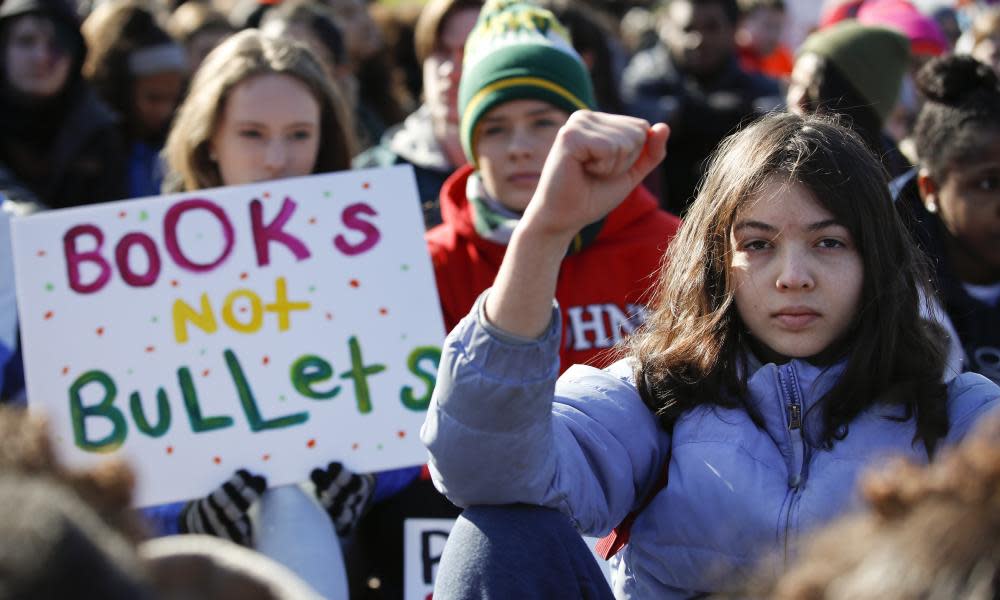National Die-In Day: US high schoolers to protest inaction on gun control

American high school students are organizing a National Die-In Day on 12 June to protest continued government inaction on gun control laws. The action will take place on the second anniversary of the Pulse nightclub shooting in Orlando, Florida, and will include a die-in at noon in front of the Capitol in Washington DC and another in Orlando. The teenage organizers are hoping to spark additional die-in protests at state capitols and town halls across the country – “anywhere with lethal legislative inaction”, as one tweet put it.
The founder of the die-in day, Amanda Fugleberg, is an 18-year-old high school senior from Orlando who previously organized a walkout to protest gun violence at her high school in March. Fugleberg said the die-in in Washington would last 12 minutes.
That is about one second for each of what she says have been approximately 700 mass shootings in the US, defined by the not-for-profit Gun Violence Archive as incidents resulting in at least four wounded, since the Pulse attack.
“It was just heartbreaking,” she said of the June 2016 shooting in her hometown, which left 49 people dead and more than 50 injured. “That day, you just kept hearing the number [of the dead] rising and rising and rising. It really made me realize there’s a problem in our country with guns.”
The idea of a national die-in day is being promoted by some of the high school students who helped organize previous national protests for stricter gun control laws, including the March for Our Lives organizer David Hogg, a survivor of the 14 February mass shooting in Parkland, Florida.
The genesis for the latest protest highlights how Parkland students have transformed the gun debate, leveraging their vast online platforms not only to battle with powerful conservative gun rights advocates but also to direct public attention to grassroots organizing efforts by other teenagers.
Fugleberg said the idea for the protest emerged after she realized that her post-graduation vacation trip to Washington, a gift from her mother, would put her in the capital on the anniversary of the Orlando shooting. She messaged Hogg about a week ago to ask if he thought it would be a good idea to organize a die-in in Washington to mark the Orlando shooting, and he supported the idea. She has since been working with other high school and college activists she connected with online to plan protests in different cities.
The Pulse attack, which was for a time the deadliest mass shooting in recent American history, did not prompt new federal gun control laws, thanks to opposition from Republican members of Congress. The lack of political reaction left Fugleberg “extremely disappointed”, she said. “It was the same conversation we always have: it was guns ... it was mental illness, and then it goes away,” she said, summarizing the polarizing arguments that commonly end up stifling meaningful debate on how to respond to such events.
The Orlando shooting did prompt a dramatic sit-in by Democratic legislators on the floor of the House of Representatives, a protest that failed to overcome House Republicans’ refusal to even allow a vote on gun control legislation.
Plans for the 12 June demonstration were in progress before the news broke last Friday of another mass shooting – this time at a high school in Santa Fe, Texas, which left 10 people dead. Several high school students from Maryland were arrested Friday after staging a small die-in in front of the House Republican leader Paul Ryan’s office, as a protest against continued inaction by lawmakers in preventing school shootings.

 Yahoo News
Yahoo News 
